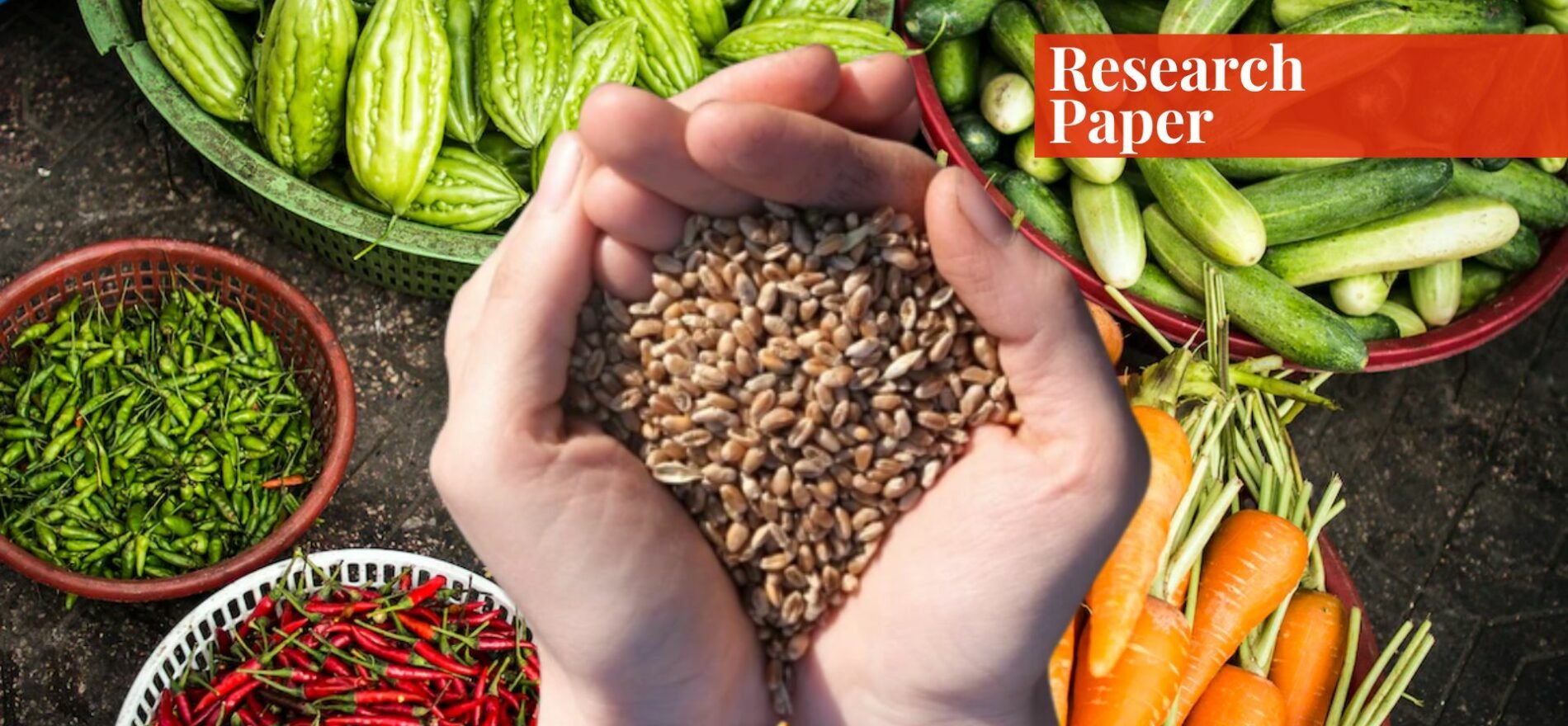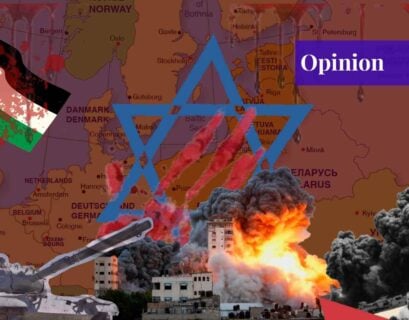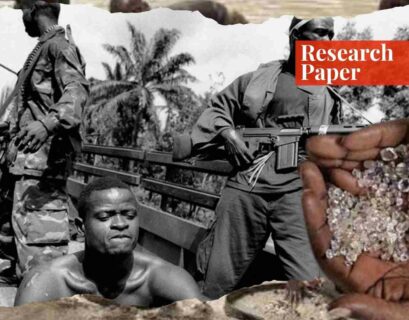Introduction
Food insecurity is generally regarded as a non-traditional security threat. Such security issues comprise the challenges faced by states and individuals that primarily arise out of non-military sources. Since they are transnational in nature with regards to their origin and conceptions, non-traditional security threats can only be effectively coped with a comprehensive response, encompassing regional and multi-regional collaboration in economic, political, and social dimensions.
Therefore, along with other human security concerns, natural disasters, mass migration, transnational crimes, human and drug trafficking, climate change, and infectious disease breakouts, food insecurity has also been considered, until now, as an issue that falls outside the scope of national security discussions. However, this view of seeing food insecurity as something that is unrelated and isolated to traditional national security is being increasingly questioned by security experts, who call for a re-examination of what constitutes a traditional notion of security and how it needs to be expanded and incorporated with other non-military threats for the well-being of a state.
The evidence provided to justify this inter-linkage is that a traditional security threat is “any event that not only threatens the survival of a state but also minimizes the welfare of a state in such a manner that it requires a coordinated effort to mitigate the impacts” (Smith, 1998). Henceforth, given the severe vulnerability of the developing world specifically towards the harsh reality of a food crisis, it does need to be treated as an issue having potential effects that can be similar to the ones generated by traditional security threats.
A Core Threat to National Security
From some historical examples, it is evident that a correspondence between food and security has somehow always been present. Whether it was Joseph’s rise to power after the successful resolution of the Egyptian food shortage issue, the Chinese Zhou dynasty losing the right to rule after failure to tackle famine, or the US’ launching of Food for Peace Programs for its allies during the Cold War, the significance of incorporating policies ensuring access to sufficient food in national security agendas can’t be ignored. Furthermore, the impact of food on climate change, poverty, humanitarian crises, and conflicts indicates not only the dynamism of global events but also an evolution of food security as a policy, hence making it an important component and national security concern.
The West, specifically America, has realized that ensuring food security would be imperative for reducing threats to the well-being of the nation. The government’s Global Food Security Strategy has acknowledged that a strong agricultural sector is a prerequisite for sustainable growth since leaving food security unchecked would incite extremist and anti-government factions, thereby causing internal instability (Verstandig, 2014). However, the developing world is yet to be that efficient.
Besides climate change, unplanned urbanization, resource mismanagement, and systemic failures, the Third World is also faced with population displacement and refugee crises caused by the scarcity of food resources. Moreover, the controversial role played by large international corporations in manipulating the situation in already vulnerable states, on one hand, reflects Western capitalist interests while at the same time, also becoming a reason for furthering the have and have-nots divide between the North and South.
Given the multiplicity of challenges faced by developing countries due to food insecurity, leaders are now addressing how food security needs to be inculcated in national policymaking and shall be dealt with as a priority in the national security agenda. The following goal can be achieved by enlisting the potential threats to national security in a hierarchical order.
With the categorization of the direct impact of food insecurity on the food supply chain as a first-order threat, policymakers can then study how such type of situation, in which public access to food is challenged, would overall lead to social instability. Lastly, the consequential challenges like weakened governance and economic system that arise out of the absence of food security can be explored as a third-order threat to national security (Eiran, Elias, & Troen, 2021).
Exacerbation of Political and Socio-Economic Instability
Various studies have established a correlation between political stability and food security. Historically, this link might have been considered weak and purely coincidental since the immense price hike of 2008 did cause food riots in the developing world; however, it didn’t have any significant political consequences as did the Arab Spring. This event, for the first time, made policymakers realize that states can use food supplies as a weapon by withholding them from the general population, however, the act can also result in upheavals that would fragmentize the political and socio-economic sectors of a state.
Therefore, in the aftermath, leaders of the largest economies of the world allocated billions of dollars to food aid, linking food insecurity explicitly with political instability. For instance, Obama’s Feed the Future program, worth 3.8 billion dollars, was also defended by US officials on the argument that ensuring food stability abroad would improve American national security in return.
Joe Biden, while making a statement on global hunger in 2011, explained the food security and political stability nexus by asserting that “investments made to ward off food insecurity and prevent its recurrence can prevent the vicious cycles of rising extremism, armed conflict and state failure” (Adams, 2014). He also quoted how the Darfur Crisis forced people to compete for resources they once shared – arable land and water supplies – exacerbating the atrocities of the militia towards the government. In the same manner, food insecurity can influence the socioeconomic fabric of the country negatively.
Researchers, like Michael Ross, while investigating the relationship between natural resources and conflicts, have generated a hypothesis about how minimal resources can create grievance and anti-government narrative among the locals. Moreover, such resources also have the tendency to be exploited by self-interested groups and to be used for their own profit, thereby further deteriorating societal conditions as well as the economy of the country.
Impact on Military Security
One of the obvious connections between food security and traditional national security is in terms of its impact on the armed forces of a country. For any state to have a viable military force, capable of effectively dealing with any challenge, it needs to be free of any influence of an internal crisis. Food uncertainty and insecurity in a state would affect economic stability, hence putting a financial strain on the readiness and retention power of the military. More recently, research conducted on food insecurity among US veterans and military families has also highlighted how this rate is higher in the military as compared to the general population of America (Lutz & Welsh, 2022).
Besides emphasizing multiple barriers to accessing food assistance as well as highlighting the challenges to household financial stability in the US, the report has also mentioned how the statistics vary regionally. However, a point to ponder is how the pandemic has worsened food insecurity in multiple regions of a mighty power like America, in return, intensifying its psychological impacts on the soldiers. Military studies have concluded soldiers can be more easily exhausted and demoralized (Philip, 1998). Therefore, in the wake of a crisis in the country, military security and performance would be affected as well.
In the case of developing countries, which are already engrossed in multiple challenges, the same effect would be amplified. Another point of worry for them is that in any case of an emergency, they also must call upon their military forces for providing aid to the common masses. Therefore, governments eager to maintain their countrywide legitimacy ought to make sure their armed forces are not unnecessarily burdened by any crisis.
Food Insecurity and Instability: The Case of Africa
Following the Darfur and Sahel famines of 1974, an expression called “food security” was introduced. Initially focused on the production and availability of sufficient food, the term was then redefined since the later famines couldn’t be explained from this lens of food security. Regardless of Sub-Saharan Africa (SSA) being the largest agricultural exporter, the persistence of chronic food insecurity in the region has made researchers explore the underlying instigators of food insecurity in Africa (Bjornlund, Bjornlund & Rooyen, 2022).
While a lot of literature has highlighted how internal shortcomings on the part of Africa—political instability, corruption, never-ending civil wars, economic mismanagement, and governments’ negligence towards local farmers—have aggravated the vulnerability of the region, the dimension of external factors is equally important (Dodo, 2020). Among these, colonialism and capitalism can be identified as the key drivers of food insecurity in SSA.
Researchers establish that colonialism undermined the social contract between the traditional communities and leaders in Africa. This is because, in the post-independence era, the agricultural production systems in the SSA region were export-oriented and only concerned with accommodating Global North by securing scarce land and labor and restricting infrastructure investments to facilitate only exports. Furthermore, global financial institutions like the World Bank and IMF made the situation worse by making Africans liberalize and privatize their economic policies to align them with international trade and economic policies, thereby proving to serve as a tool of capitalism against an already suffering region. The African leaders, in return, without truly understanding the future potential consequences, did what they were told to do.
The statistics released by Global Report on Food Crises (2022), have revealed the severity of the African situation. With at least one in every five going without food in a day, approx. 140 million Africans are currently facing acute food insecurity. Moreover, a regional analysis asserts that the Southern and Central African regions have witnessed additional food-insecure people in the past year. With the Democratic Republic of Congo, Zimbabwe, Malawi, Mozambique, and Central African Republic being the hardest hit areas of 2021, the Horn of Africa has now become the most affected area of 2022, with about 50 million sufferers.
In view of the food insecurity and instability nexus, rising prices of food and fuel, as discussed earlier, have contributed to widespread unrest in the past. A specific case of Sudan can be taken into account. Back in 2019, the high cost of living and rising food commodity prices caused an ouster of Omar al-Bashar. The situation, nevertheless, deteriorated to such an extent that a state of emergency had to be imposed in 2021.
Now, given the context of global food price hike as a result of the Russia-Ukraine War, the UN has already cautioned about overall instability in the region because of states like Sudan, where a third of the population is already suffering from climatic shocks, political turmoil and food price hike (ISS, 2022). Similarly, the African Union (AU) itself has endorsed the threat of food insecurity to African stability, with the motto of their 2022 conference being “strengthening resilience in food security, agro-food systems and social-protection systems for the acceleration of human and capital development.”
Therefore, the AU and the Regional Economic Communities (RECs) must chalk out a comprehensive plan. While acknowledging the magnitude of the food insecurity challenges faced by Africa, short-term strategies focusing on livelihood saving shall be put forth and in the longer run, regional trade shall be enhanced through proper monitoring and implementation of the African Continental Free Trade Area (AfCFTA).
Conclusion
Given the significance of how the four levels of security; individual, national, regional, and global, are mutually reinforcing, a question that has now attracted the attention of the researchers is whether food insecurity can lead to a full-blown conflict, thereby becoming a traditional security issue for the developing states. Historical accounts do indicate that rising prices have the potential to generate conflict, particularly by causing a population displacement, breakdown of socio-economic and political structures, exacerbation of grievances, or inducing competition for scarce resources.
Moreover, crises in the form of insurgencies, revolutions, and civil wars created as a result of price hikes have also provided evidence that the possibility of a conflict can’t be completely ruled out even if a non-traditional security threat is involved in the picture. Extensive literature has tried to debate how the causal relationship between food insecurity and conflicts can be better explored.
Qualitative and descriptive research methods have been employed by various disciplines to study this relation on multiple levels of analysis, as well as the already existing data has been further extended with more contemporary statistical evidence. Yet, there are still some limitations to fully establishing the hypothesis that food insecurity leads to conflict. Firstly, a deep study of the aforementioned variables is required to reach a conclusion. While there have been some cases, they differ in terms of the context in which they originated.
Given this diversity as well as the varying nature of conflicts generated from food insecurity, there is a need to gather more reliable information on all the dimensions involved at the state-level analysis i.e., social, economic, political, and institutional factors (Martin-Shields & Stojetz, 2018). Secondly, another hindrance in developing a solid causal relationship between the two variables is the interplay of multiple factors at the onset of a crisis. Therefore, it also needs to be investigated whether food insecurity solely became a reason for conflict, or it just became a source of amplifying the already existing violent tendencies in a state.
In short, after an insight into the African case, it can be easily said that just like food insecurity can erupt from multiple internal and external factors, it can, in return, foment a situation of instability. If left unchecked, this instability could then threaten the national security of the developing states by generating socio-economic and political fragmentation and leaving an impact on its military security, thereby doing damage no less than a traditional security threat.
References
- Smith, P. (1998). Food Security and Political Stability in the Asia-Pacific Region. Asia-Pacific Center for Security Studies.
- Verstandig, T. (2014). Food Security Is National Security. Climate Diplomacy.
- Eiran, E., Elias, M., & Troen, A. M. (2021). No Bread, No Peace; National security experts need to put food back on the table as a core issue. Foreign Policy.
- Adams, C. S. (2014). Bread and Riots: Assessing the Effect of Food Security on Political Stability. Georgetown Public Policy Review, 3–5.
- Lutz , J., & Welsh, C. (2022). Solving Food Insecurity among U.S. Veterans and Military Families. Center for Strategic and International Studies.https://www.csis.org/analysis/solving-food-insecurity-among-us-veterans-and-military-families
- Philip. L. (1998). Feeding Frontline Forces. International Defense Review.
- Bjornlund, V., Bjornlund, H., & Rooyen, A. van. (2022). Why food insecurity persists in sub‑Ssub-Saharanca: A review of existing evidence. Food Security. https://pubmed.ncbi.nlm.nih.gov/35136455/#:~:text=Despite%20SSA%20being%20a%20net,consumers%20in%20the%20Global%20North
- Dodo, M. K. (2020). Understanding Africa’s Food Security Challenges. Food Security in Africa.
- Worsening hunger crisis could threaten Africa’s stability. (2022). Institute for Security Studies. https://issafrica.org/pscreport/psc-insights/worsening-hunger-crisis-could-threaten-africas-stability
- Martin-Shields, C., & Stojetz, W. (2018). Food security and conflict. Empirical challenges and future opportunities for research and policy-making on food security and conflict. FAO Agricultural Development Economics Working Paper 18-04.
If you want to submit your articles, research papers, and book reviews, please check the Submissions page.
The views and opinions expressed in this article/paper are the author’s own and do not necessarily reflect the editorial position of Paradigm Shift.


















